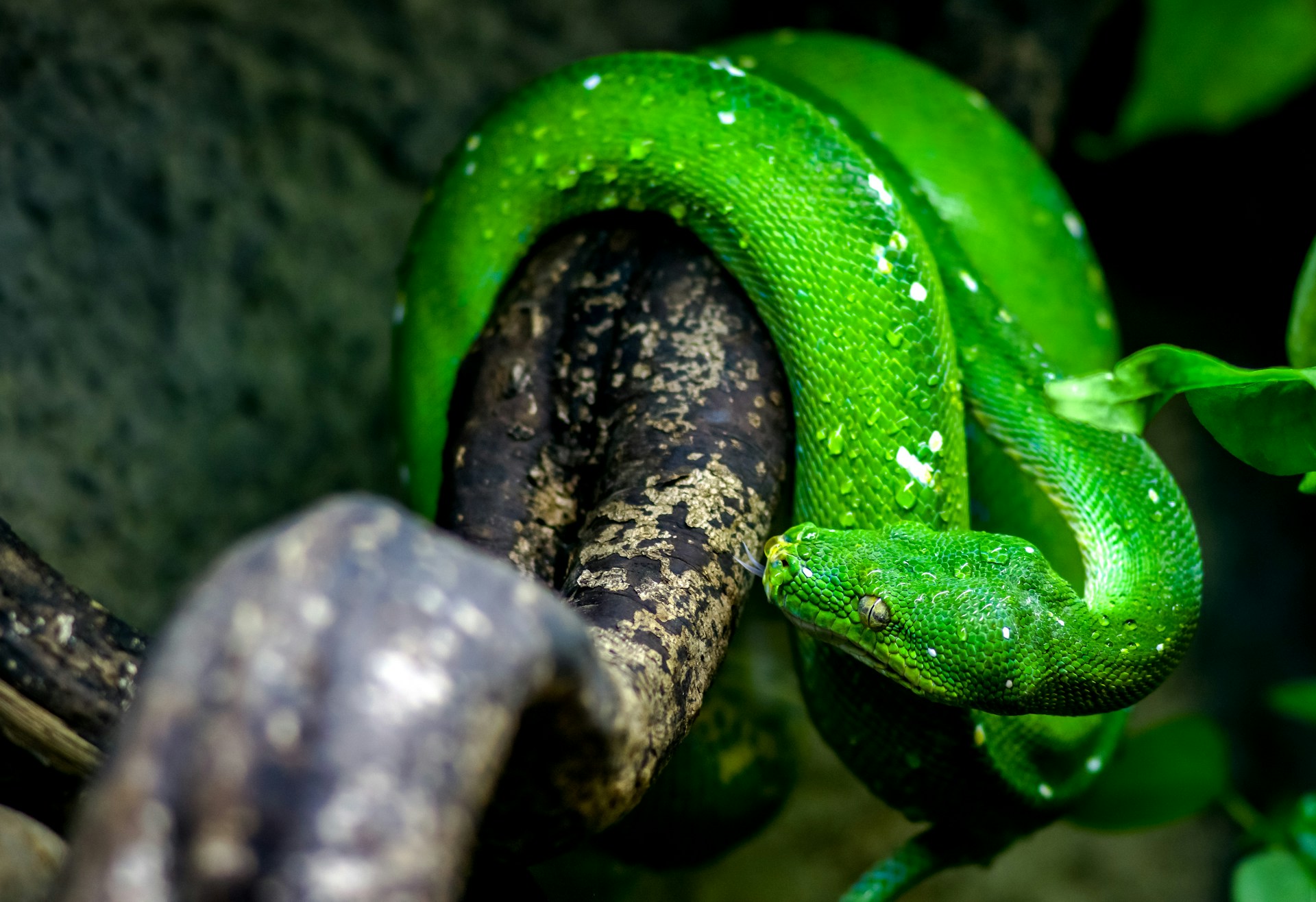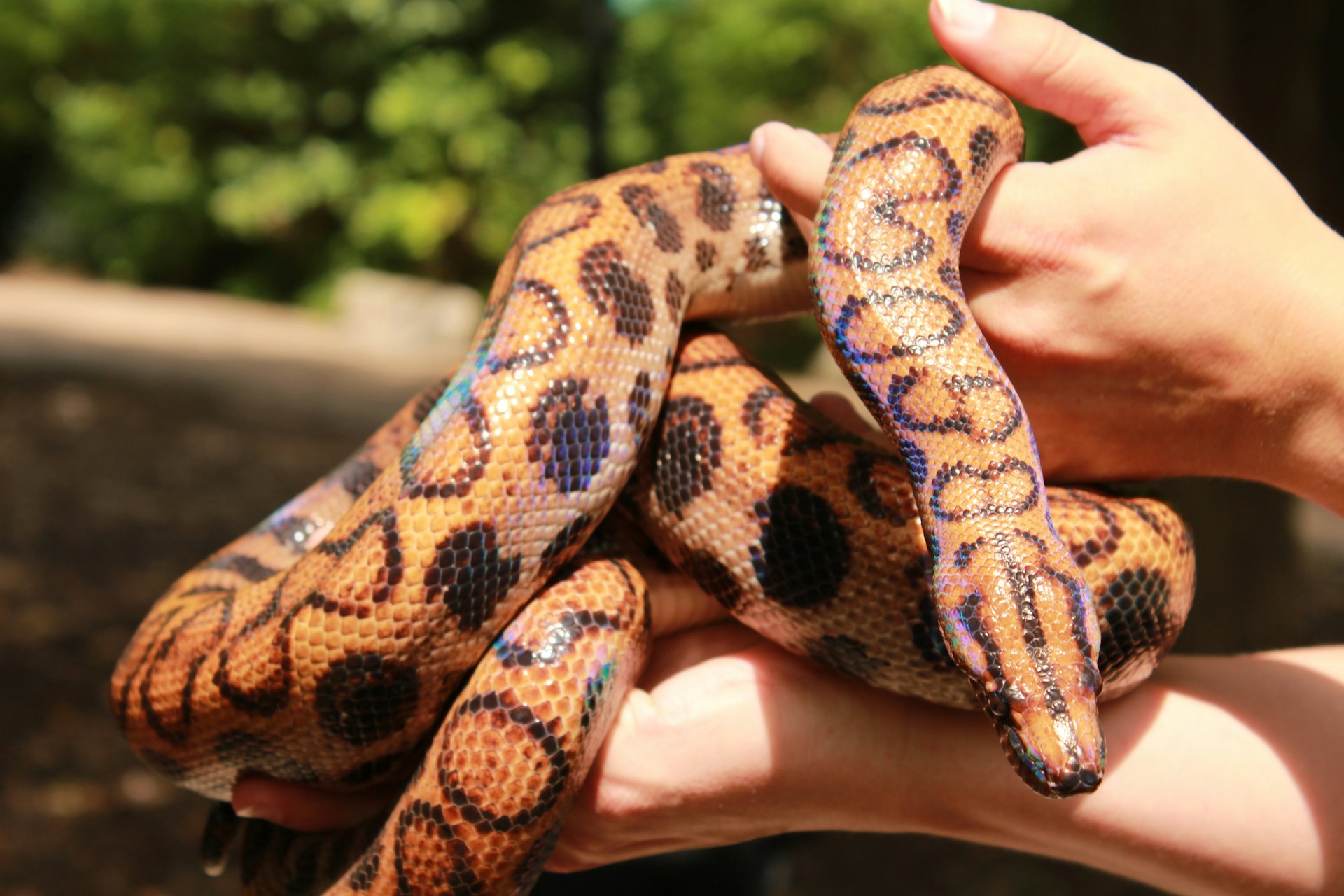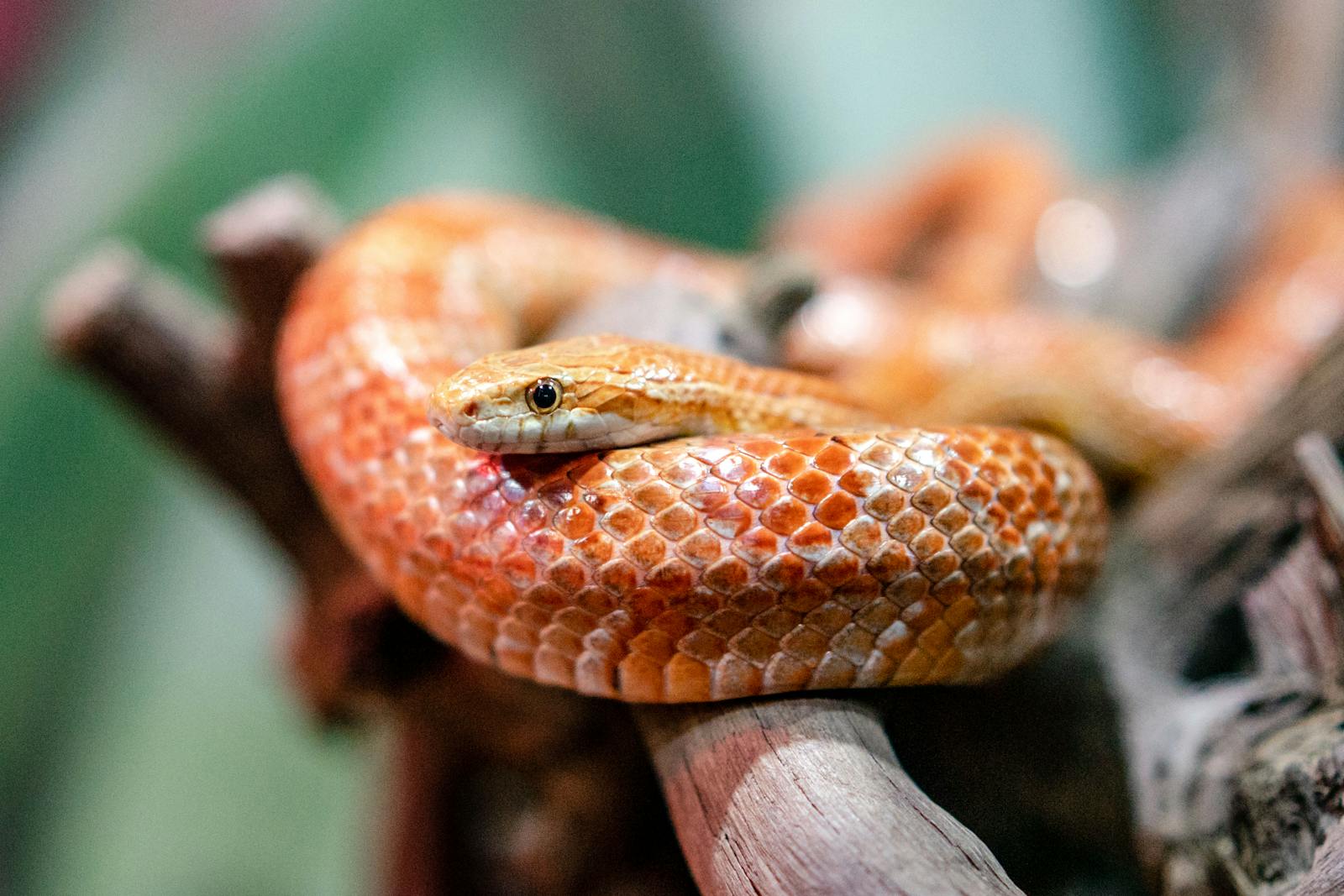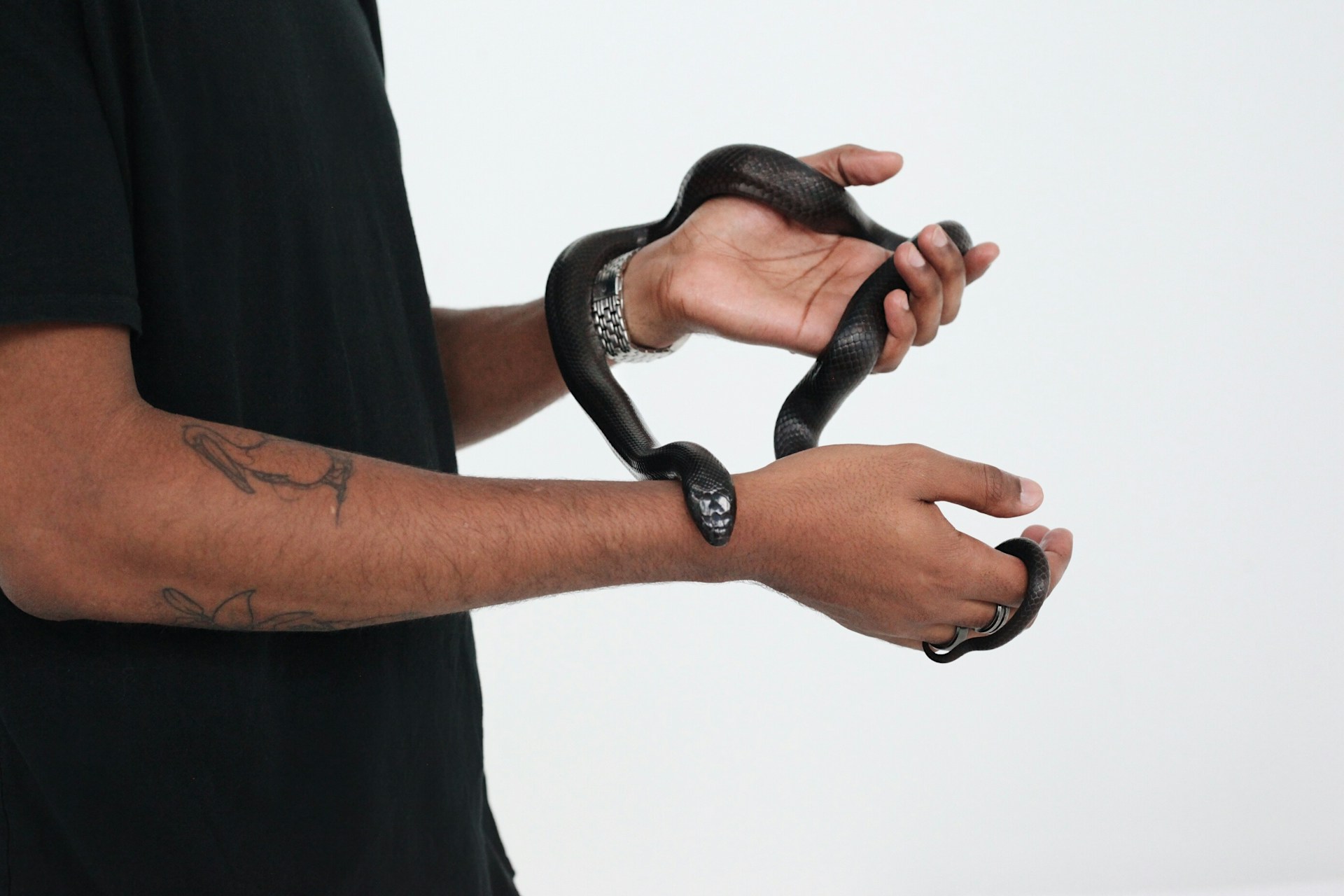Non-venomous snakes, comprising roughly 85% of all snake species worldwide, have evolved diverse dietary preferences across different habitats and lifestyles.
From the smallest thread snakes measuring just a few inches to massive constrictors like anacondas reaching over 25 feet, these remarkable reptiles have feeding behaviors that fascinate both wildlife enthusiasts and reptile keepers alike.
In this comprehensive examination, we’ll explore the natural diets of non-venomous snakes in their wild habitats and how these compare to optimal feeding practices in captivity.
Understanding these differences is crucial not only for snake conservation but also for ensuring the health and wellbeing of captive specimens, whether they’re housed in professional zoological institutions or kept as personal pets.
Natural Diet Classification of Non-Venomous Snakes
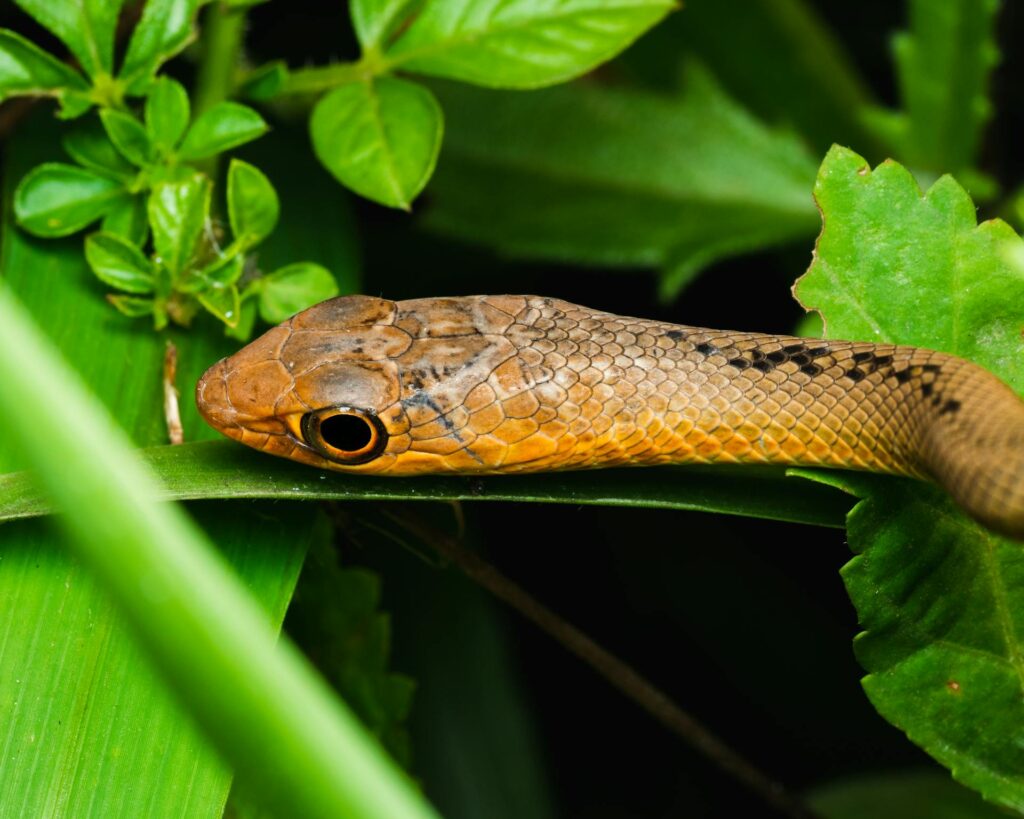
Non-venomous snakes typically fall into several dietary categories based on their preferred prey.
Rodentivores primarily consume mice, rats, and similar mammals, making up the largest group which includes popular species like corn snakes and ball pythons.
Insectivores focus on invertebrates such as crickets, worms, and various insects, often representing smaller snake species. Piscivores specialize in hunting fish and aquatic prey, with water snakes and certain garter snake species falling into this category.
Some specialized non-venomous snakes are even ophiophagous, meaning they consume other snakes, while others might be avivores that hunt birds and eggs.
This natural specialization has evolved over millions of years, with each snake’s digestive system, hunting behavior, and morphology optimized for their preferred prey types.
Feeding Behaviors in the Wild

Non-venomous snakes employ fascinating hunting strategies in their natural habitats. Constrictors like boas and pythons ambush their prey, striking quickly and wrapping powerful coils around victims to restrict blood flow until death occurs.
Other species like the North American rat snake actively forage, searching through various environments to locate potential meals.
Many aquatic non-venomous species like water snakes use specialized techniques to capture fish and amphibians, often hunting by feel in murky waters.
Even among similar species, seasonal variations in prey availability drive adaptability, with many snakes opportunistically consuming different prey types depending on what’s abundant.
These specialized behaviors represent millions of years of evolutionary adaptation, allowing each species to occupy a specific ecological niche.
Dietary Adaptations Based on Habitat
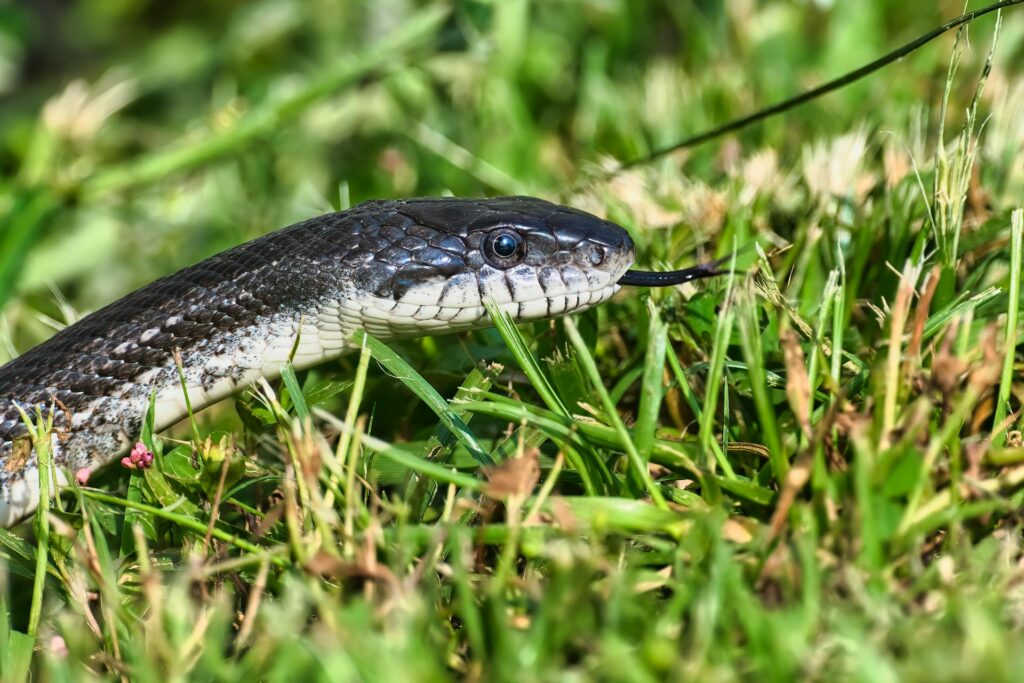
Snake diets are profoundly influenced by their native habitats, with geographic location shaping available prey populations.
Arboreal species like vine snakes and green tree pythons have evolved to capture birds, lizards, and tree-dwelling mammals in the canopy.
Desert-dwelling non-venomous snakes often specialize in consuming reptilian prey that share their harsh environment, while occasionally supplementing with small mammals when available.
Rainforest species typically enjoy the greatest diversity in their diets, reflecting the biodiversity of these ecosystems.
Aquatic and semi-aquatic non-venomous snakes primarily consume fish, amphibians, and crustaceans, with specialized adaptations for underwater hunting.
These habitat-specific adaptations demonstrate how snake anatomy, behavior, and digestion have co-evolved with their environments to maximize feeding success.
Age-Related Dietary Changes
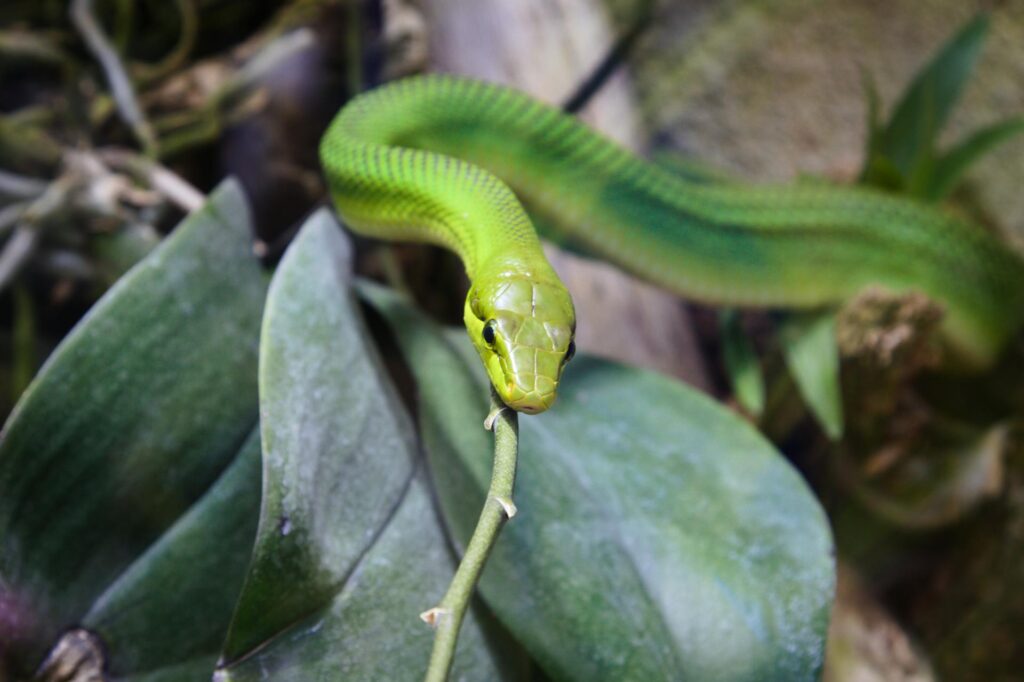
Many non-venomous snake species undergo significant dietary shifts as they mature from juveniles to adults.
Hatchling and juvenile snakes typically begin with smaller prey items like newborn mice, small lizards, amphibians, or large insects that they can safely consume.
As they grow, their prey preference gradually shifts to larger items, with many adult snakes exclusively consuming mammals that would have been too large and dangerous for them to handle when younger.
This natural progression allows young snakes to feed more frequently on easier-to-catch prey while developing hunting skills and growing to a size that can handle larger meals.
Some species show dramatic shifts, such as certain water snakes that primarily eat fish and amphibians as juveniles but incorporate more terrestrial prey as adults, demonstrating their dietary flexibility throughout their lifecycle.
Common Captivity Diets for Non-Venomous Snakes
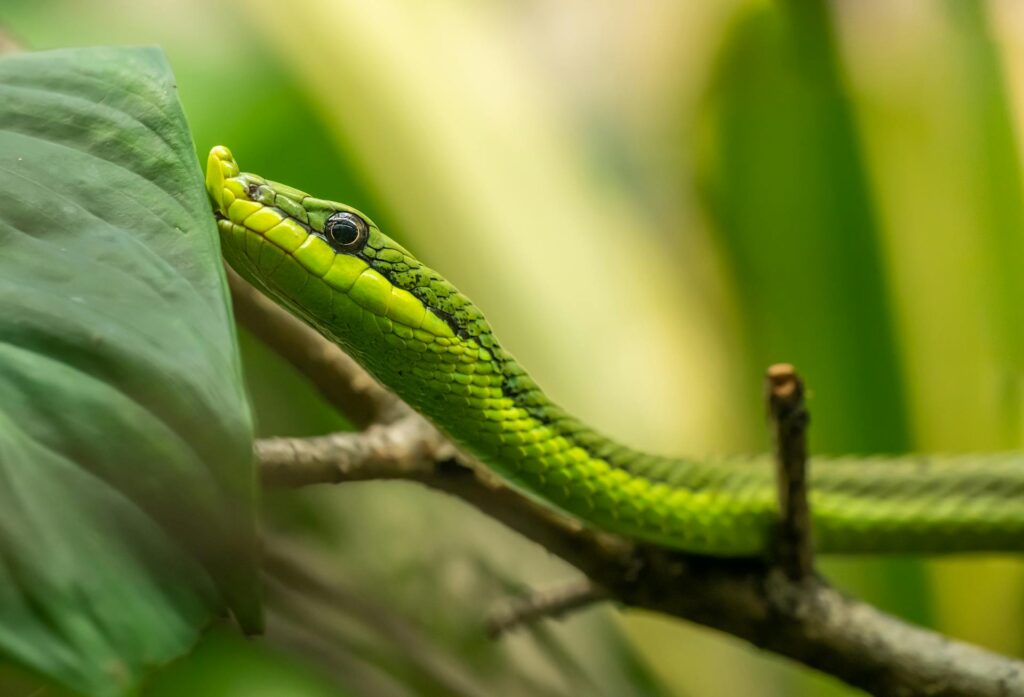
In captivity, most non-venomous snakes are maintained on a simplified diet compared to their wild counterparts.
The majority of pet snakes are fed pre-killed rodents, with mice and rats of various sizes forming the staple food source for species like ball pythons, corn snakes, and king snakes.
Smaller or specialized species may receive commercially available alternatives like quail eggs, fish, commercially bred insects such as crickets and mealworms, or small lizards.
Larger constrictors like boas and pythons often progress to rabbits or commercially raised quail as they grow to adult size.
Most experienced keepers avoid live prey due to ethical concerns and risk of injury to the snake, instead offering thawed frozen prey items that have been warmed to approximate body temperature, making these pre-killed items more attractive to the snake.
Nutritional Considerations in Captivity
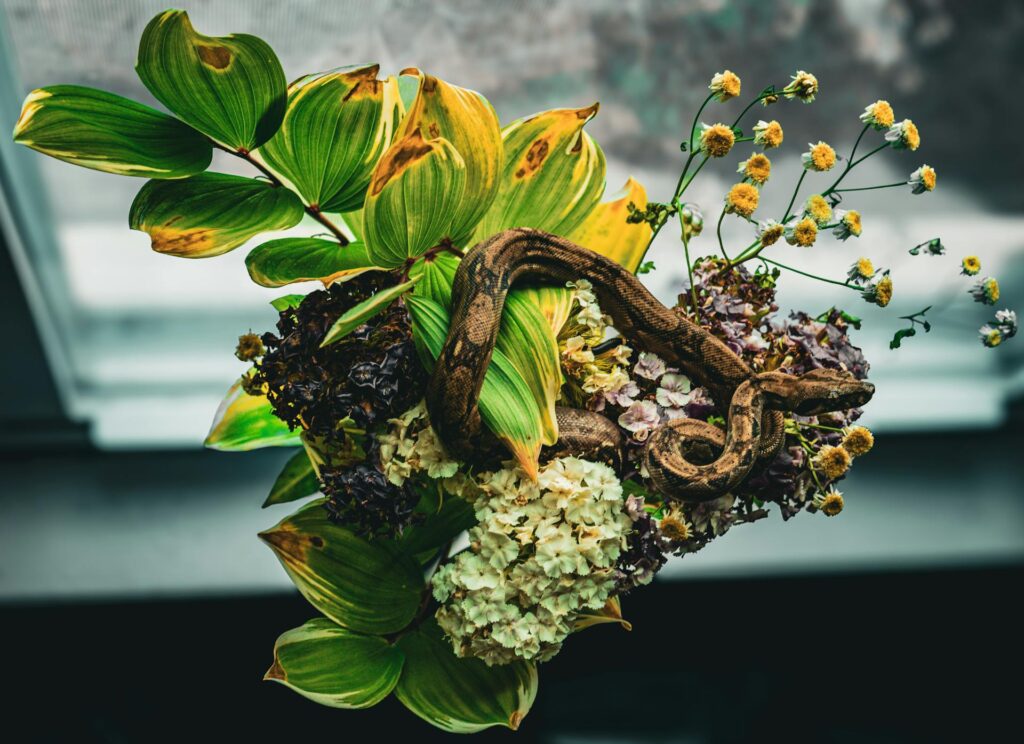
Captive feeding requires careful attention to nutritional adequacy that wild snakes naturally achieve through diverse prey consumption.
Commercially bred rodents may not offer the same nutritional profile as wild prey, especially if these feeder animals are raised on low-quality diets themselves, potentially leading to nutritional deficiencies in captive snakes.
To address this, many keepers practice “gut-loading” of prey animals, feeding them nutrient-rich foods before offering them to the snake, thereby indirectly enhancing the snake’s nutrition.
Some keepers also dust prey items with calcium and vitamin supplements, particularly for growing juveniles or breeding females with higher nutritional demands.
The frequency of feeding in captivity typically mimics natural patterns – smaller, younger snakes eat more frequently (often weekly), while adult specimens might go two to three weeks between meals, aligning with their slower metabolism.
Key Differences Between Wild and Captive Diets
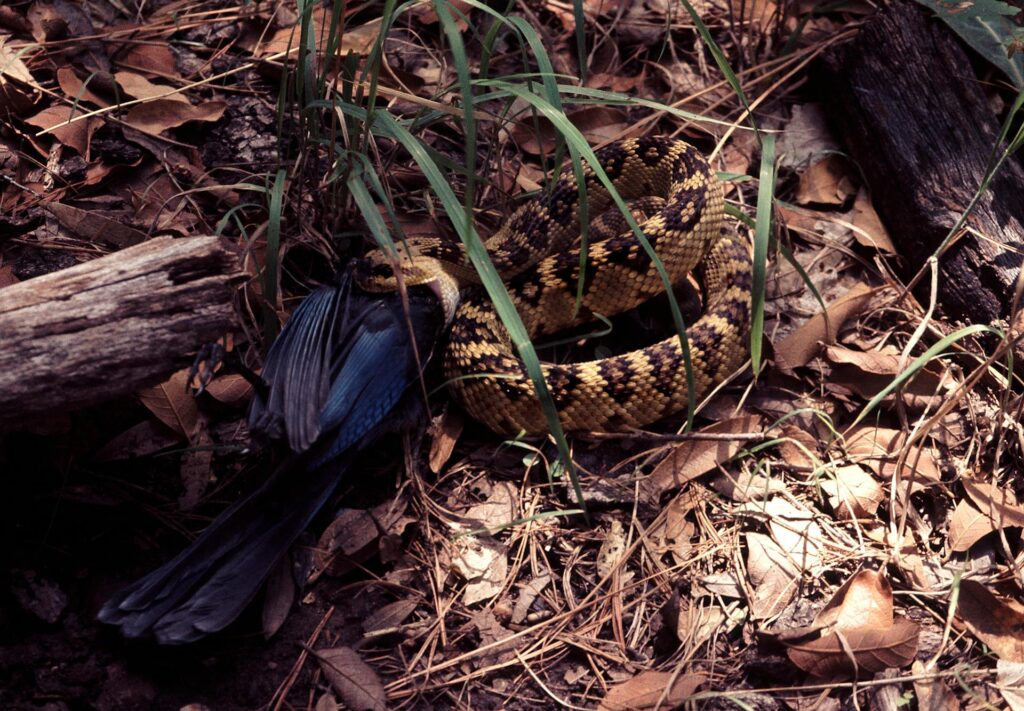
The most significant difference between wild and captive feeding patterns lies in prey diversity and hunting behavior.
Wild snakes typically consume multiple prey species throughout the year, providing a natural variety of nutrients and feeding challenges that keep them physically and mentally stimulated.
Captive snakes, however, often receive just one or two prey types throughout their lives, potentially limiting nutritional diversity but offering consistency and predictability.
Wild snakes experience natural feast-and-famine cycles based on prey availability, sometimes going weeks or months without successful hunts, while captive specimens typically receive regular meals on a set schedule.
Additionally, wild snakes develop and maintain hunting behaviors through constant practice, whereas captive specimens may never need to use these natural abilities, potentially affecting their physical condition and behavioral expression.
Health Implications of Captive Diets

The simplified diets common in captivity can lead to specific health concerns that snake keepers must vigilantly monitor.
Obesity has become increasingly common in pet snakes, particularly in species like ball pythons and corn snakes, resulting from overfeeding, insufficient exercise, and an unvarying diet of commercially bred rodents that may contain higher fat content than wild prey.
Nutritional deficiencies can develop over time, particularly calcium and vitamin imbalances that may lead to metabolic bone disease or reproductive issues in breeding females.
Some captive snakes develop feeding disorders, including regurgitation or food refusal, often stemming from inappropriate feeding practices, stress, or improper environmental conditions.
Experienced keepers address these concerns through carefully tailored feeding schedules, appropriate prey sizing, attention to environmental factors that affect digestion, and occasional fasting periods that mimic natural feeding patterns.
Specialized Feeding in Professional Facilities
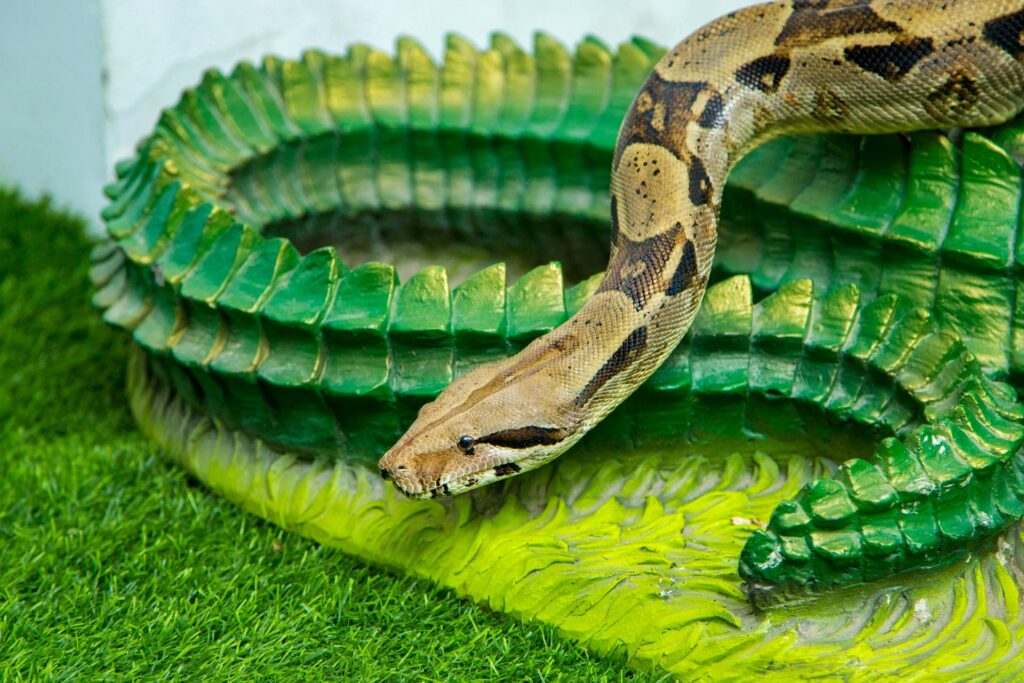
Zoological institutions and professional breeding facilities often implement more sophisticated feeding protocols than typical pet owners.
These establishments may maintain diverse prey colonies beyond standard rodents, including specialized feeders like quail, chicks, rabbits, and various reptiles to better approximate natural diets for their collection.
Research-based nutritional programs guide feeding schedules, with many zoos employing nutritionists who develop species-specific feeding plans based on wild dietary studies and health monitoring.
For difficult or specialized feeders, these facilities may employ techniques like scent transfer, prey movement simulation, or environmental modifications to encourage natural feeding behaviors.
Professional facilities also frequently incorporate environmental enrichment during feeding, such as hiding food or creating puzzle feeders, which stimulate natural hunting behaviors and provide psychological benefits beyond mere nutrition.
Ethical Considerations in Snake Feeding
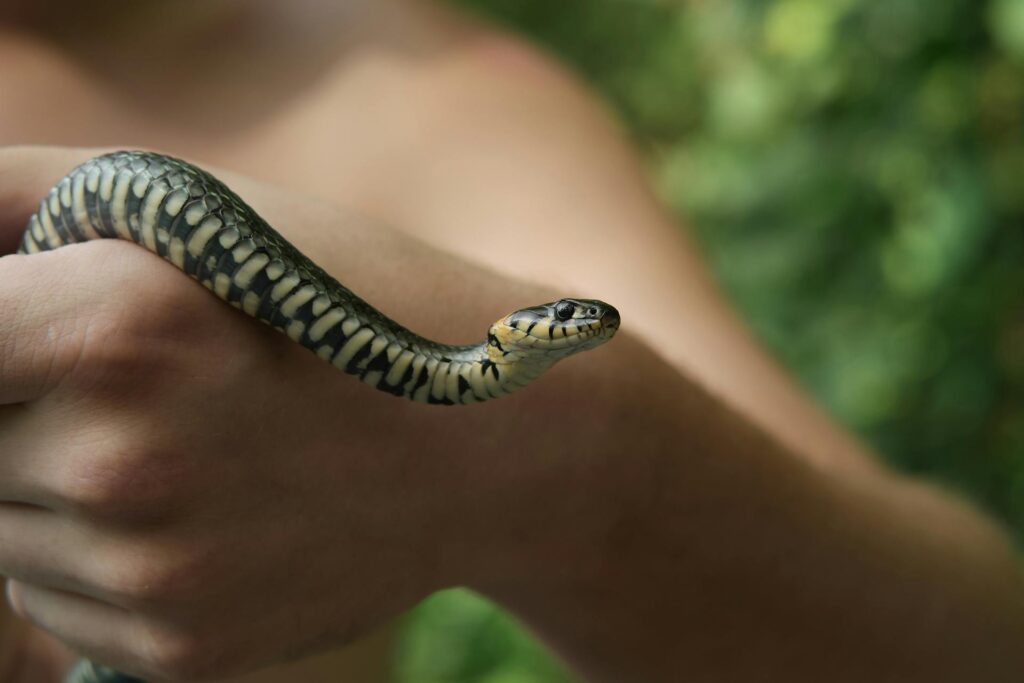
The ethics of feeding practices for captive non-venomous snakes continues to evolve within the reptile-keeping community.
The use of live prey remains controversial, with many hobbyists and professional organizations discouraging the practice due to potential suffering of prey animals and risk of injury to snakes from defensive prey.
Pre-killed feeding presents a more humane alternative that has become standard practice, with most reputable keepers transitioning snakes to accept thawed frozen prey.
Wildlife conservation concerns have also emerged regarding the sourcing of specialized feeders for some snake species, particularly when wild-caught animals are used as food sources.
The reptile community increasingly emphasizes responsible breeding of feeder animals in humane conditions, with growing attention to the welfare of both predator and prey in captive feeding scenarios.
Transitioning Wild-Caught Snakes to Captive Diets
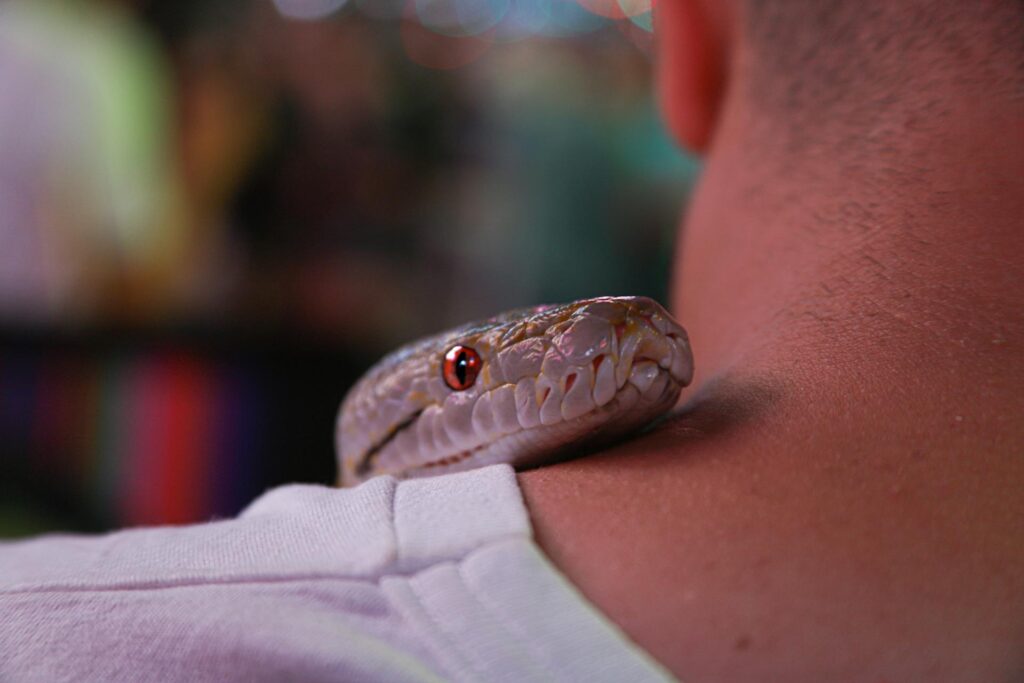
Wild-caught non-venomous snakes often present significant feeding challenges when introduced to captivity.
These specimens typically have established prey preferences and hunting behaviors that may not align with standard captive feeding practices, sometimes refusing common feeder items like mice or rats.
Experienced keepers employ various techniques to facilitate this critical transition, including scent-transfer methods where prey items are rubbed with the scent of natural food sources to increase palatability.
For particularly difficult feeders, assist-feeding or force-feeding may become necessary as temporary measures to prevent starvation while the snake adjusts to captivity.
The expertise required for these transitions underscores why wild-caught specimens are generally not recommended for novice keepers, with captive-bred alternatives offering much greater feeding reliability and ethical sourcing.
Feeding Specialized Non-Venomous Species
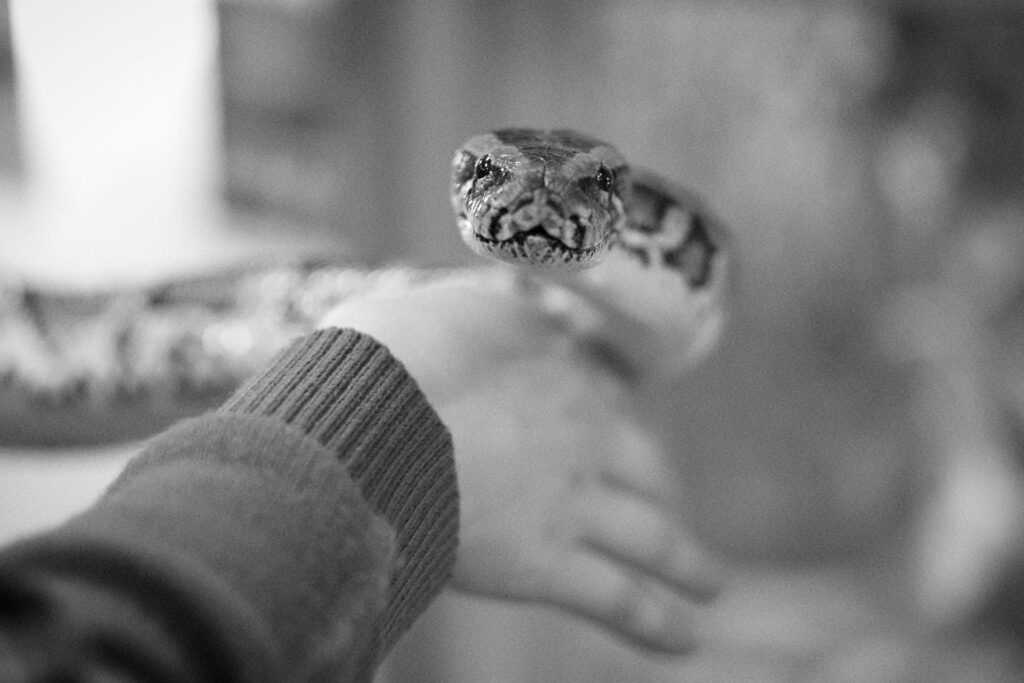
Certain non-venomous snake species present unique feeding challenges in captivity due to highly specialized wild diets.
Egg-eating snakes (genus Dasypeltis) consume only bird eggs in the wild, requiring keepers to source appropriately sized finch, button quail, or artificially constructed eggs since these specialized feeders cannot physically consume rodents.
Fish-eating specialists like water snakes often require a variety of fresh or frozen fish species to maintain proper nutrition, with thiaminase-containing fish like goldfish being limited to prevent vitamin deficiencies.
Snake-eating species such as king snakes can usually be transitioned to rodent diets, though this sometimes requires significant patience and specialized techniques.
The insect-eating specialists, typically among the smallest snake species, require regular offerings of appropriately sized insects that have been properly gut-loaded with nutrients, presenting a different feeding schedule than most rodent-eating species.
Future Directions in Captive Snake Nutrition
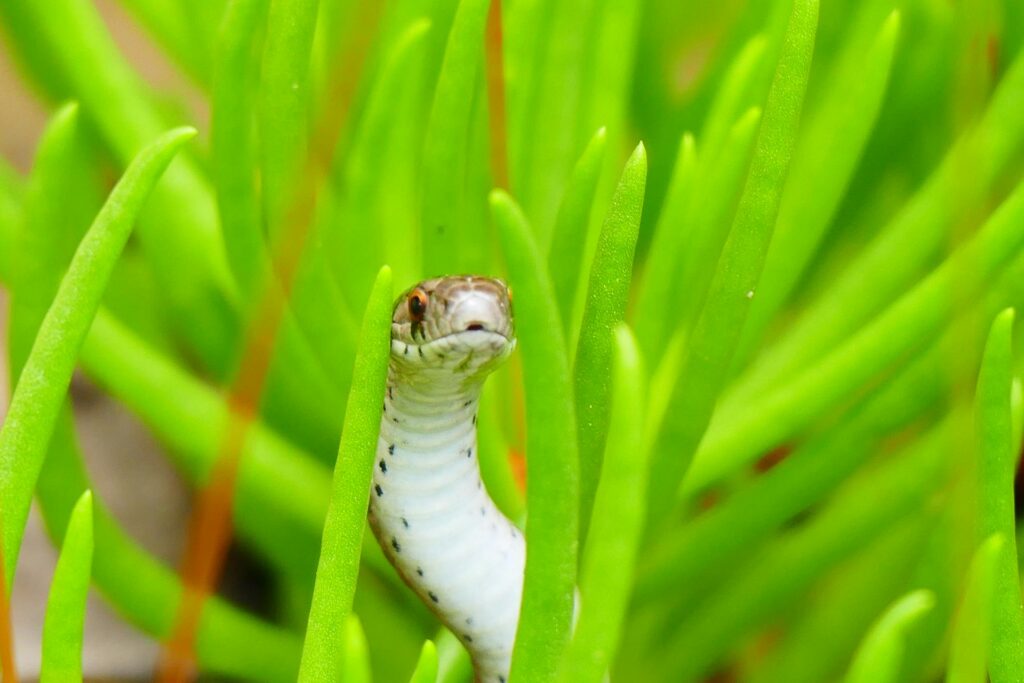
The field of reptile nutrition continues to advance, with new research improving our understanding of optimal captive diets for non-venomous snakes.
Commercial reptile food manufacturers have begun developing more nutritionally complete feeder rodents through specialized diets for these animals, potentially addressing some nutritional gaps in traditional captive feeding.
Some researchers are exploring the development of prepared or artificial diet formulations that could reduce or eliminate the need for whole-prey feeding, though success with such products has been limited in obligate carnivores like snakes.
Advanced nutritional testing is becoming more accessible to private keepers, allowing for blood work and other diagnostics that can identify subclinical nutritional deficiencies before they cause visible health problems.
As our knowledge expands, feeding practices will likely continue to evolve toward protocols that better balance the natural feeding behaviors of wild snakes with the practical realities and ethical considerations of keeping these fascinating reptiles in captivity.
Conclusion
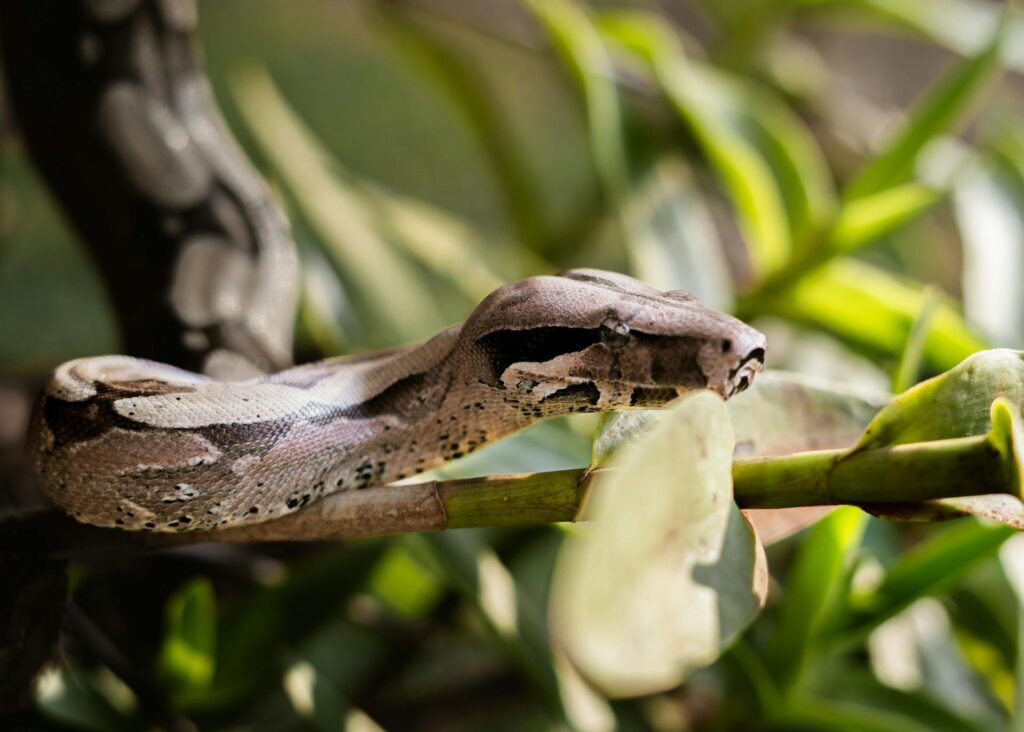
The dietary needs of non-venomous snakes represent a fascinating intersection of evolutionary biology and practical animal husbandry.
While wild snakes consume diverse prey items determined by their habitat, size, and specialized adaptations, captive specimens typically thrive on more standardized diets that balance nutritional needs with practical considerations.
Understanding these differences allows snake keepers to provide optimal care while respecting the natural biology of these remarkable reptiles.
As research advances and the reptile-keeping community grows more sophisticated, feeding practices will continue to evolve, ideally moving closer to replicating the benefits of natural diets while maintaining the ethical standards expected in modern animal care.
Whether in the wild or in captivity, the feeding behaviors of non-venomous snakes remain one of their most captivating characteristics, offering insights into their evolutionary history and ecological significance.

